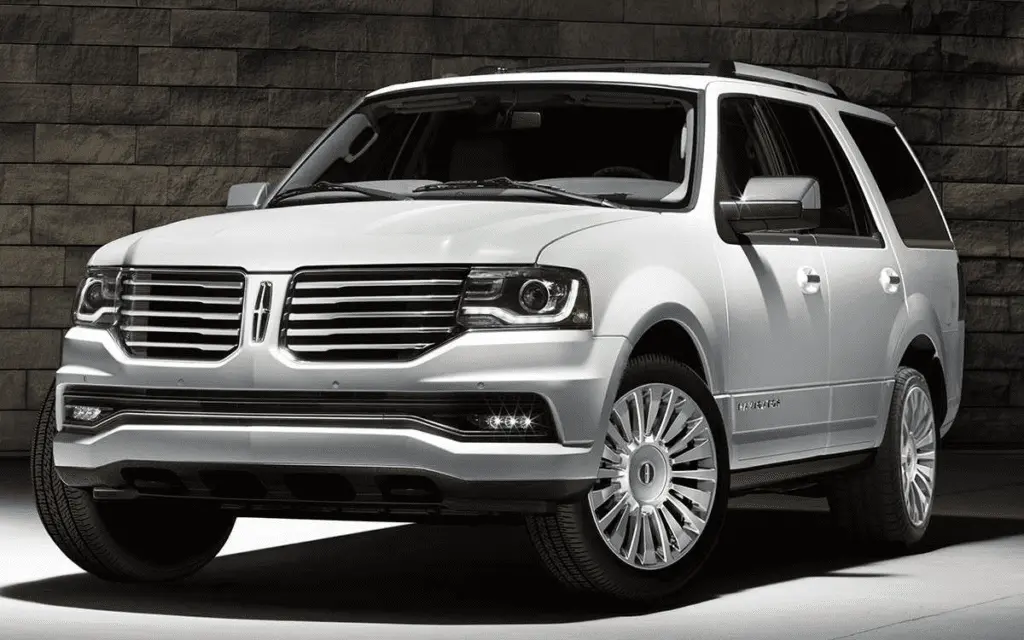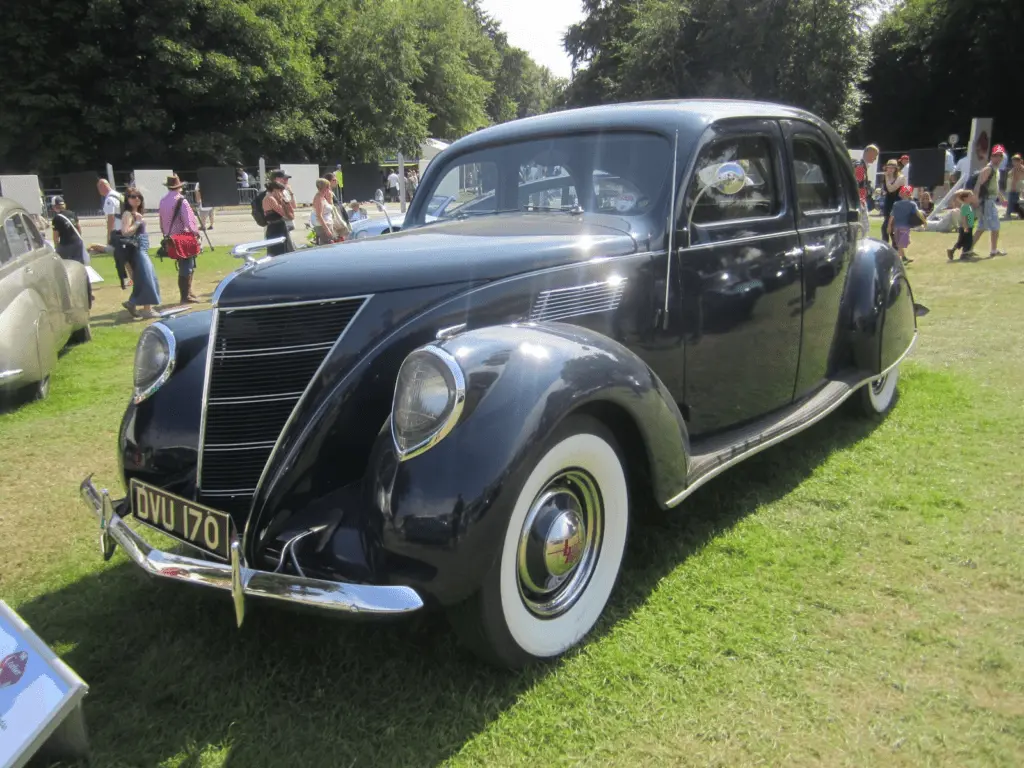
The history of the Lincoln brand
The Lincoln brand is synonymous with luxury and grandeur. It is not so often seen on the roads, since this luxury brand is intended for a more affluent segment of society. The production of cars was made to order, and the history of the brand itself takes its roots in the very beginning of the last century.
The brand is one of the divisions of the Ford Motors concern. The headquarters are located in Diborn.
Henry Leland founded the company in 1917, but the company flourished in 1921. The very name of the company is associated with the name of the President of the United States Abraham Lincoln. Initially, the field of activity was the production of power units for military aviation. Leland created the V-engine, which was transformed into the Lincoln V8, the first child of the luxury class. Lack of financial resources, due to lack of demand for cars, led to the fact that the company was bought out by Henry Ford, who occupied one of the priority places in the American car market.
For a long period of time, Cadillac was the only competitor, because only a few were endowed with “abundance of luxury” at that time.
After Leland's death, the company's branch was transferred to Henry Ford's son, Edsel Ford.
The privileged elite of the US government used Lincoln's services to provide them with luxury cars, and in turn this ensured financial independence from Ford.
When designing powerful aircraft power units, the question of the technical components of future cars was dropped. And in 1932 the Lincoln KB model debuted, having a 12-cylinder power unit, and in 1936 the Zephyr model was produced, which was considered more budgetary and was able to increase the brand's demand up to nine times and for almost five years before the heavy burden of war.

But, after World War II, production continued, and in 1956 the Lincoln Premier was released.
After the 1970s, the design of the models was changed. In order to reduce the cost of cars, due to the wave of financial setbacks, it was decided to resort to uniformity on a par with the models of parent company Ford. And until 1998, the company was engaged in the production of modifications to the machines of the parent company.
In 1970-1980, several more projects were produced, after which the company suspended development for almost a dozen years.
A series of changes in the production of Lincoln went back to the level of production of luxury cars. The 2006 economic crisis pushed the company towards autonomy and independence, which largely saved it from financial burden.
In the period from 2008 to 2010, the company shifted its range of activities to the US domestic market.
Founder

Henry Leland is associated with two famous brands that brought him worldwide fame, and the American inventor was born in 1843 in Burton into a farming family.
Not much is known about Leland's early years, but it is enough that he loved to tinker with technology, had such skills as uniqueness, accuracy and patience, which, in turn, played an important role as a creator in the future.
As an adult, at the height of the American Civil War, Henry worked in the arms industry. Further moving along the desired vector, Henry Leland got a job at an engineering plant as a design mechanic. This place served him a lot, he himself created and modernized all sorts of mechanisms, paying attention to the finest details, calculating everything to the smallest detail, which in turn brought him invaluable experience. His career began with such little things. His first achievement was an electric hair clipper.
Experience and skills propelled him up the career ladder and soon Leland decided to start his own business. With an abundance of ideas, but financial lack, Henry opens a company with his friend Faulkner. The company was named Leland & Faulcner. The specifics of the enterprise were very diverse: from bicycle parts to a steam engine. With a quality approach to each order, Henry began to turn to customers, especially in the field of automobile and shipbuilding, since at this stage the automotive industry was just in its infancy.

The beginning of the 20th century was the breakthrough of the enormous potential of Henry Leland. After the reorganization of the Henry Ford company into a company with a new name, which is attributed to it from the French nobleman - Antoine Cadillac, the design of the Cadillac car, model A, was carried out together with Henry Ford. The car was equipped with the famous engine, Leland's inventions.
Leland's perfectionism in detail brought great fame with his second model, the 1905 Cadillac D. It was an explosion in the auto industry of the time, putting the model on a pedestal.
In 1909, Cadillac became part of General Motors, with founder Durant, who was appointed president. During a disagreement with Durant over the invention of engines for military aviation, Leland receives a categorical no, which prompted him to step down from the presidency and leave the firm.
In 1914 Leland invented the V-engine, which was also a breakthrough in America.

Founds a new company with the Cadilac employees who left after him and names it after Abraham Lincoln. The company has produced an outrageous amount of powertrains for military aviation. After the end of the war, Henry returned to the automotive industry and designed a model car with a V8 aircraft engine.
Having surpassed himself, having made a leap in the auto industry, many did not understand the car model at that time, there was no particular demand and the company found itself in a difficult financial situation.
Henry Ford bought out the Lincoln company, under which, for a short time, Henry Leland still had control. On the basis of industrial disputes between Ford and Leland, the first Henry, being the full owner, forced the other to write a letter of resignation.
Henry Leland died in 1932 at the age of 89.
Emblem

The silver color of the logo is synonymous with elegance and wealth, and the four-pointed Lincoln star, which is the emblem itself, has many theories.
The first indicates that the machines should become known in all parts of the world. This is indicated by the emblem icon in the form of a compass with arrows.
The other shows the "Star of Lincoln", which symbolizes the celestial body, which is associated with the greatness of the trademark.
The third theory says that there is no meaning in the emblem.
Automotive brand history
After the Second World War, after the Lincoln KB and Zephyr models, production of the Lincoln Continental MarK VII with an aerodynamic body, anti-lock braking system, air suspension and a trip computer began in 1984, making another breakthrough. The car was of a luxury class. A newer model of this version was released in 1995 and is equipped with an 8-cylinder engine.

On the basis of an identical engine with the Continental, a rear-wheel drive Lincoln Town Car model was created, which was quite a comfortable option.
The Lincoln Navigator SUV, released in 1997, is rewarded with an abundance of luxury. Sales skyrocketed and within a couple of years a redesigned model was introduced.

One comment
Marilyn
Greetings! This is my first comment here so I just wanted to give a quick shout out and tell you I really enjoy reading through your
articles. Can you suggest any other blogs/websites/forums that go over the same subjects?
Thanks a lot!
Buy PSG Shirt